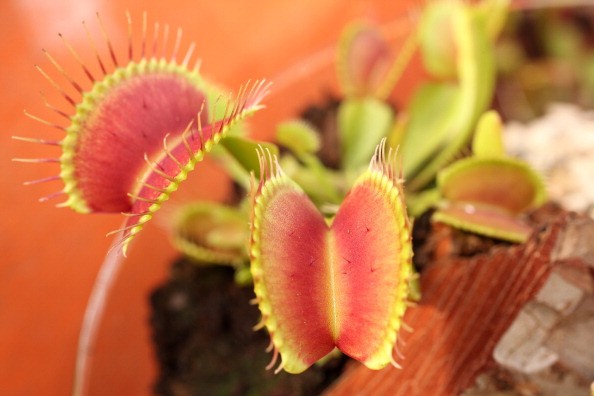When a Venus flytrap wraps its fleshy lobes around an unsuspecting bug, the victim is out.
The plant's strange habit of munching on insects has captivated the imaginations of many people, including Charles Darwin.
Scientists have now seized the flytrap's power for themselves in an experiment that appears to be right out of a pulp science-fiction novel: they have discovered a mechanism to trigger its trap using soft, semi-organic artificial neurons.
Venus flytrap's snap process of its trap

According to SingularityHub, researchers from three Swedish institutions believe they have discovered a better option.
They built false neurons and synapses (the constructions that associate two neurons) out of organic semiconductors that are biocompatible, biodegradable, moderate, and able of attaining both electrical and ionic inclinations.
The devices are made of organic electrochemical transistors, which were invented by researchers in 2018.
These components are made utilizing a very simple mix of screen printing and spray coating, allowing thousands of them to be printed on a single sheet of plastic.
Several of these components were combined by the researchers to construct a mini-circuit that replicates the action of a neuron.
Simone Fabiano, an assistant professor at Linkoping University, recommended a different approach to creating neurotechnology that might result in implants that perform more safely and effectively in conjunction with biological environments.
The researchers employed an odd animal, one that doesn't even have a traditional nervous system, to test their artificial neurons: the Venus Flytrap, as per Technology Networks.
According to Fabiano, the team desired an "easy-to-handle" model system for their study.
The Flytrap, like other plants, lacks nerves and neurons but is capable of generating action potentials.
While the actual function of these action potentials in many plants is unknown, in the carnivorous Flytrap, they are used to allow the plant to quickly close its jaws on unsuspecting prey.
According to Scientific American, such trials are successful because the motion is controlled by a device that is analogous to an animal's nervous system.
The phloem, the tissue that distributes nutrients through plants contains ion channels through which charged particles can pass in the flytrap.
This causes the plant's lobes to shut, in the same manner, that an electrical charge runs along an animal's nerves to convey orders to its muscles.
However, there are some significant distinctions between the two systems.
Furthermore, as compared to animal neurons, the membranes of plants are hyperpolarized. This means that scientists will have to apply additional electricity to cause a response in the Venus flytrap.
They do this by inoculating electrified chloride ions into their electrical equipment.
A device that serves as a neuron to the plant
Fabiano and his colleagues built a neuron-like electrical gadget to seal their flytrap. They started by screen printing carbon and silver chloride electrodes onto a polyester substrate.
"It's what you use to put labels on T-shirts. It's a very, very easy way of producing electronics," said Fabiano via Scientific American.
The electrodes were then linked to the lobes and midrib (or crease) of the plant's trap, and a current was sent through the system-first at a high frequency, then at a lower frequency.
They discovered that the high frequency elicited a rapid reaction, while the low frequency was insufficient to close the trap.
Unlike conventional transistors, these devices can transport signals by varying the concentration of ions, much like biological neurons.
To illustrate the capability of these artificial neurons to be associated up to natural systems, the experimenters put one of them into a Venus flytrap.
While plants require nerve cells, the Venus flytrap uses ionic inclinations to shut its jaws.
The researchers demonstrated in a study published in Nature Communications that injecting a current into the input of their artificial neuron could force the plant to snap shut.
© 2025 NatureWorldNews.com All rights reserved. Do not reproduce without permission.





